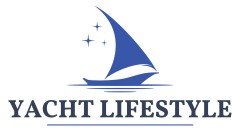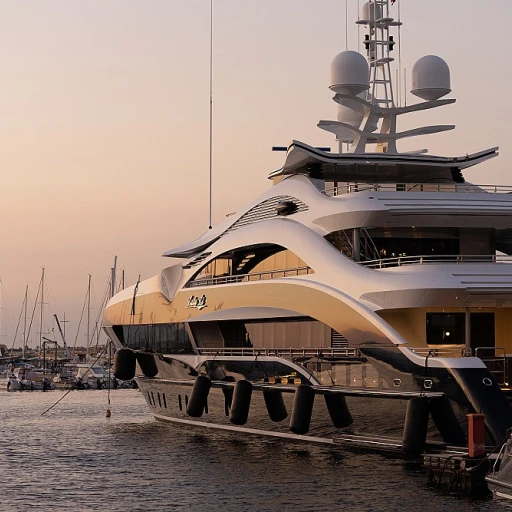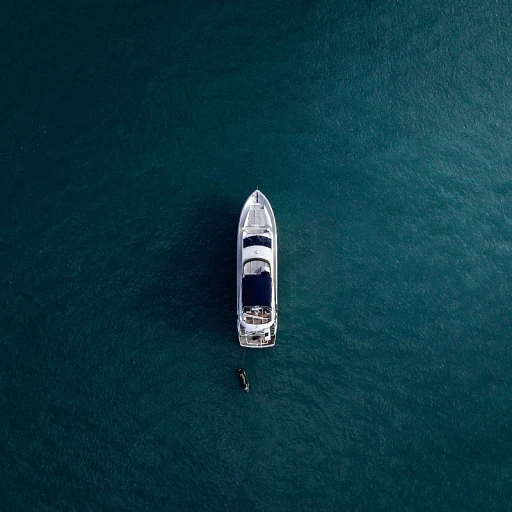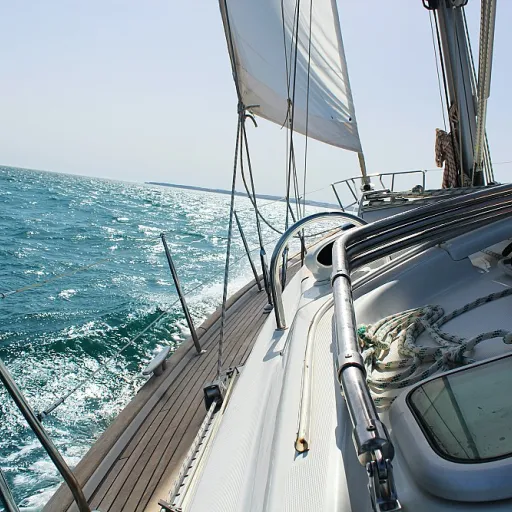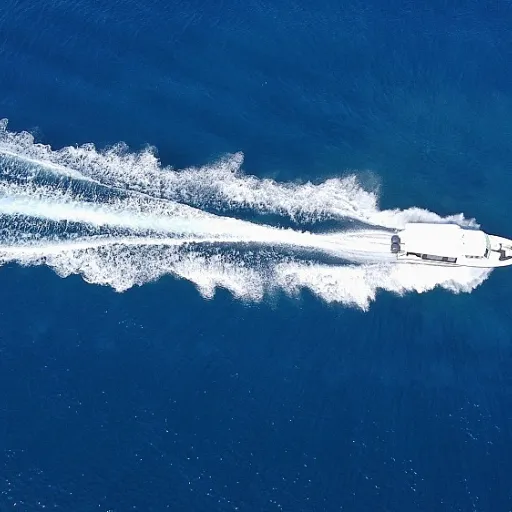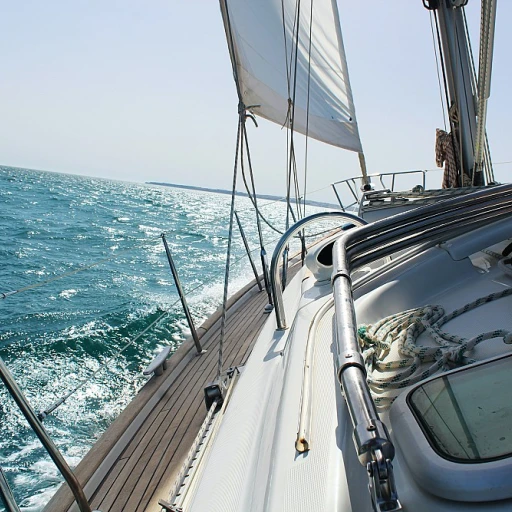
Understanding the Importance of a Helm Pad
Why a Helm Pad is Essential for Every Yacht
In the world of yachting, comfort and efficiency are paramount, especially during those long hours at the helm. The helm pad, though often overlooked, plays a crucial role in enhancing the overall boating experience. If you're a yacht enthusiast keen on optimizing your time on the water, understanding the significance of these pads is essential. Firstly, a helm pad is designed to provide anti-fatigue benefits. When operating a yacht, spending extended periods at the helm can lead to physical fatigue due to constant standing and steering. An anti-fatigue helm pad, typically made from dual-density foam, offers a comfortable surface to stand on, reducing strain and enhancing endurance for those crucial journeys. Moreover, these pads are crafted using marine-grade materials which ensure durability and performance even in the harshest marine environments. Options like SeaDek offer a brushed texture for additional grip, while choices in teak or black colors can complement your yacht's aesthetics. With advancements in material technology, these pads not only enhance comfort but also add a sleek, custom look. They come in various sizes, catering to both large and small helms. Some products even allow for custom helm designs or full-sheet coverage for a seamless appearance. For yacht owners who value both form and function, considering the availability of different texture and color options can make a significant difference, offering a personalized touch. Explore enhancing your yacht experience with LED lighting solutions to see how other subtle enhancements can complement your helm pad choice and create an overall cohesive look. Given the array of features and benefits, investing in a quality helm pad not only enhances comfort but also adds value to your yacht, making it a wise choice for any seasoned boater.Materials and Design Considerations
Exploring Material Choices and Design for Helm Pads
When you’re considering a new helm pad for your yacht, materials and design are key factors that can greatly affect comfort and durability. The choice you make can even enhance your overall yacht experience, especially during those long hours at sea.
Many boat enthusiasts prefer a dual density foam construction, which offers that sought-after balance between support and comfort. This material is known for its anti-fatigue properties, crucial for minimizing discomfort during extended time at the helm. Foam also provides a cushioned surface, reducing the impact on your joints.
In terms of design, helm pads come in various options, including the popular teak black finish, which pairs beautifully with a range of yacht interiors. For those seeking a more natural look, the brushed texture replicates the appearance of real teak, providing an aesthetic appeal without compromising on quality.
Some helm pads are offered as a full sheet, allowing custom helm designs that perfectly fit large helm areas or even small drill pads setups. This customization means you won’t have to worry about seams or exposed edges that might wear over time.
Aside from aesthetics, practical considerations such as the thickness of the pad can influence both comfort and the ease of navigation. Larger helms typically benefit from pads with more thickness to provide adequate cushioning and support.
For ease of installation, many products now feature a simple peel and stick mechanism. This not only makes the process quick and straightforward but also ensures that the pad stays securely in place, even in wetter conditions. Most manufacturers offer marine-grade materials specifically designed to provide high resistance to water, UV, and general wear.
Understanding the nuances of helm pad material and design will equip you with the knowledge to select the best product that not only meets your needs but also elevates your overall helm experience.
Installation and Maintenance Tips
Getting the Most Out of Your Helm Pad Installation
Installing a helm pad is a straightforward process, designed to enhance your yachting experience by offering both comfort and style. For those seeking an easy peel and stick installation, products like the dual density helm pads offer a convenient option. These are particularly beneficial if you're looking to achieve the perfect fit for both small helm and large helm areas. When choosing a helm pad, consider the marine grade materials which are specifically designed to withstand harsh maritime conditions. Options like SeaDek and brushed texture designs not only provide anti-fatigue benefits during long hours at the wheel but also offer a sleek and elegant finish, whether you go for a teak or teak black look.Preparatory Steps
- Choose the Right Product: Select a product that complements your yacht's aesthetic. Black, teak, or custom helm pads are popular choices.
- Surface Preparation: Ensure your installation area is clean and dry. This is crucial for the adhesive aspect of the pad to stick effectively.
- Measure the Surface: Accurately measuring the area ensures that the pad fits perfectly without any overhang. If you choose a full sheet size, trimming may be necessary.
Installation Tips
- Peel and Stick: Follow the manufacturer's instructions carefully. Most products are self-adhesive, requiring you to simply peel off the backing and stick them onto the desired area.
- Pressure Application: Apply firm pressure during installation to remove any air bubbles and ensure a smooth surface finish.
Maintenance for Longevity
Regular maintenance is key to preserving the condition of your helm pad. Due to the exposure to water and other elements, periodically check the pad's condition and clean any salt or debris from the surface.- Clean Gently: Use mild soapy water and a soft brush to clean the surface, avoiding abrasive materials that could damage the foam or brushed texture.
- Routine Inspections: Regularly inspect the pad for any signs of wear and tear, especially in high-stress areas or on pads coaming and dash pads.
Comparing Top Helm Pad Brands
Top Helm Pad Brands and Their Offerings
When it comes to selecting helm pads, the options may seem extensive, yet distinct factors set each brand apart in design, material, and value. As we explore some of the leading brands in the industry, comparing their products can lead to a more informed decision.- SeaDek: A well-known name in the helm pad world, SeaDek stands out with its dual density foam design, offering exceptional anti-fatigue benefits for extended hours on the water. Their pads are available in a mix of colors like black and teak, and provide easy peel-and-stick installation, which suits large or small helm arrangements.
- MarineMat: Known for their marine-grade products, MarineMat provides pads that boast a brushed texture, enhancing grip and comfort. The customizable options, including dash pads and full sheet varieties, make them a favorite among yacht owners looking for personalized solutions.
- OceanGrip: Built to withstand harsh marine environments, OceanGrip helm pads come in thickness levels that cater to varying levels of comfort and aesthetic desires. Their anti-fatigue properties are complemented by durability, offering a solid combo for a smooth helm experience.
Cost vs. Benefit Analysis
Evaluating the Cost and Benefits of Different Helm Pad Options
When delving into helm pads, understanding the cost versus benefit analysis is crucial for yacht enthusiasts aiming to enhance their boating experience. Products in this category can range widely, from budget-friendly options to luxurious, premium-grade selections. The pricing of a helm pad often reflects its material quality and additional features. For instance, pads crafted from dual-density foam are typically priced higher due to their enhanced anti-fatigue properties, which offer significant relief during long hours at sea. Meanwhile, pads made from marine-grade materials designed to withstand harsh conditions, like teak or black SeaDek, might also come with a heftier price tag given their durability and functionality.Material Choices and Their Impact on Cost
- Teak Helms vs. Foam Pads: Teak options, particularly teak black variants, are generally more expensive due to their rich aesthetics and resilience against the elements. Foam options, especially those with high-density helm properties, provide a cushioned experience without breaking the bank.
- Custom vs. Standard Pads: Custom helm pads, tailored to fit specific boat designs or colors, can command higher prices compared to standard, mass-produced models. If a yacht owner requires unique details—such as a brushed texture or specific thickness—the cost increases accordingly.
Long-Term Benefits in Comfort and Safety
- Anti-Fatigue Benefits: Helm pads equipped with anti-fatigue technology, such as those made from dual-density materials, offer considerable comfort, reducing the strain experienced during extended hours on the helm. These models often justify their price with the relief they provide.
- Durability and Maintenance: Products constructed with high-grade pads coaming materials require less frequent replacement, offering long-term savings despite an initial higher investment.
